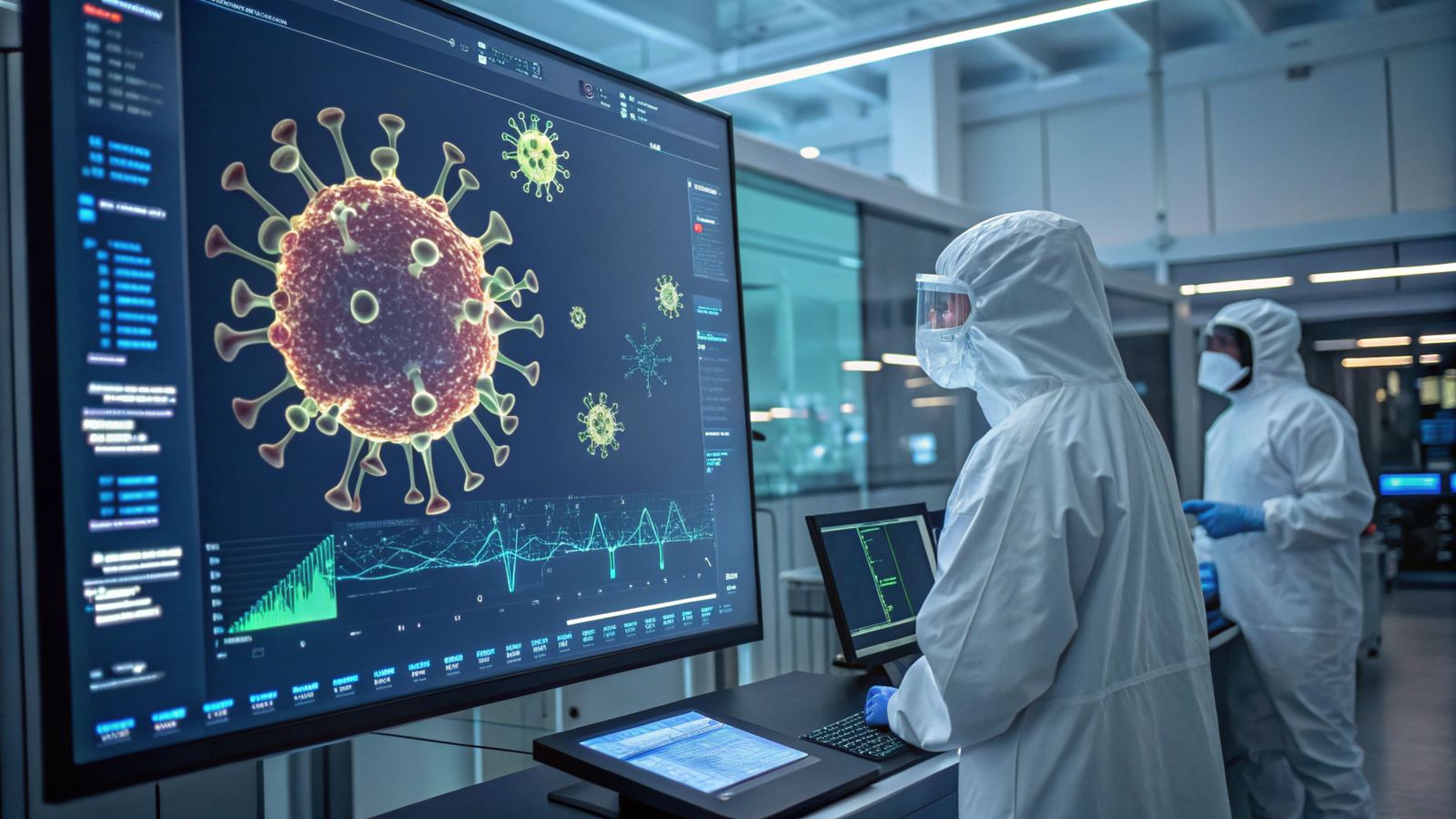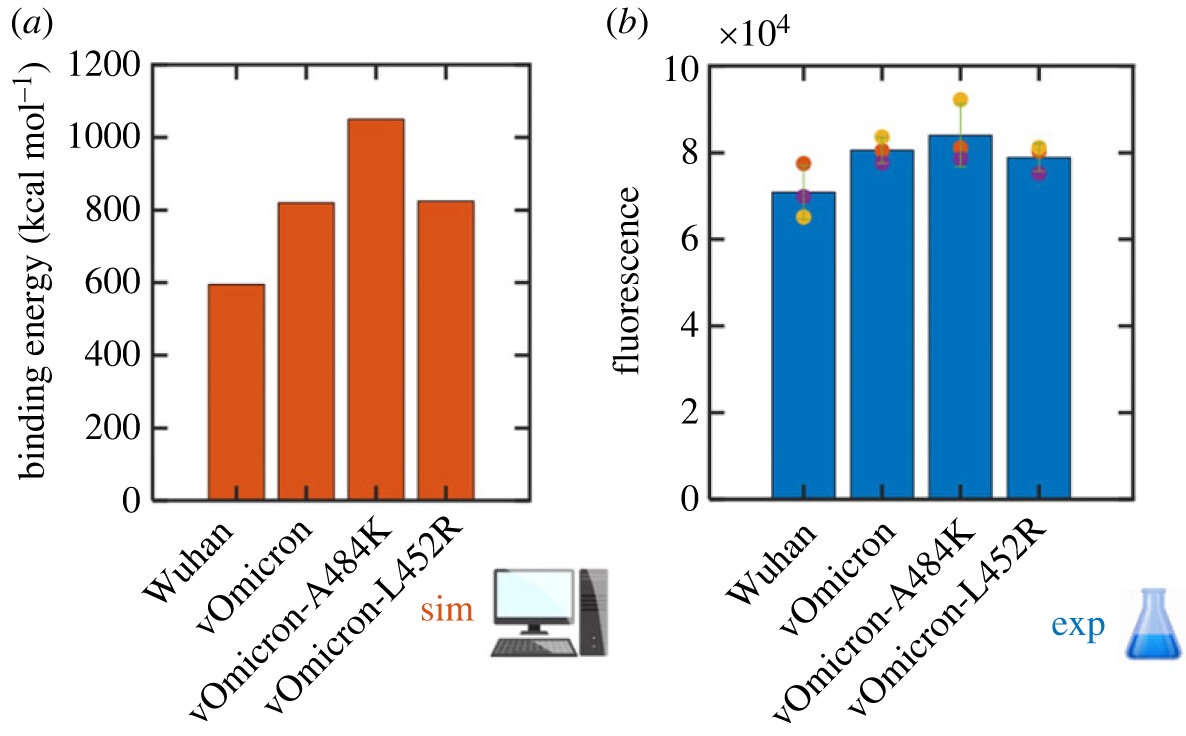Follow us on Google News (click on ☆)

These advanced modeling tools allow for the study of complex biological interactions and are crucial for monitoring virus evolution and designing more effective vaccines. The equations of quantum mechanics are used to describe and predict the structures and properties of molecules. However, until now, few methods were capable of calculating more than a few hundred atoms.
Researchers have developed a simulation method, QM-CR, which enables the simulation of thousands of atoms using quantum mechanics (QM) combined with a reduction in the complexity of degrees of freedom (CR). In this study, they successfully simulated the electronic structure of approximately 13,000 atoms to predict and characterize the binding of SARS-CoV-2 spike protein variants with the human receptor hACE2.
The researchers compared four spike protein variants: Wuhan, Omicron, and two Omicron-based variants. To assess their binding with the hACE2 receptor, the scientists considered the energetic contribution of amino acids and simulated a projection of the effect of certain mutations for each amino acid.
This study provided a more detailed understanding of how different mutations affect the interaction between the spike protein and the hACE2 receptor. Furthermore, the simulation predictions were validated by comparing the efficiency of the spike protein variants in binding with cells expressing hACE2 (see figure).
These results are particularly remarkable because when they were published in 2021, the A484K mutation, which was hypothesized to be involved in binding with ACE2, had not yet been identified by epidemiology laboratories. It took 20 months for this mutation to be observed in the BA.2.86 variant, confirming the value of quantum simulations in obtaining highly advanced predictions.

Figure: on the left (in orange), the quantum simulation of the virulence of the four SARS-CoV-2 variants is confirmed by experimental tests, on the right (in blue).
© CEA
This QM-CR quantum simulation model has demonstrated its ability to identify crucial mutations for intermolecular interactions. This method not only helps in understanding the underlying mechanisms of protein binding but can also guide the design of highly specific new treatments. This work highlights the importance of advanced modeling tools in studying complex biological interactions and their potential for monitoring virus evolution and designing more robust vaccines.
Collaboration:
- Boston College Department of Biology (USA)
- Harvard Medical School (USA)
- RIKEN Center for Computational Science (Japan)
References:
ZACCARIA M, GENOVESE L, LAWHORN BE, DAWSON W, JOYAL AS, HU J, AUTISSIER P, NAKAJIMA T, JOHNSON WE, FOFANA I, FARZAN M and MOMENI B.
Predicting potential SARS-CoV-2 mutations of concern via full quantum mechanical modelling.
J. R. Soc. Interface 2024.